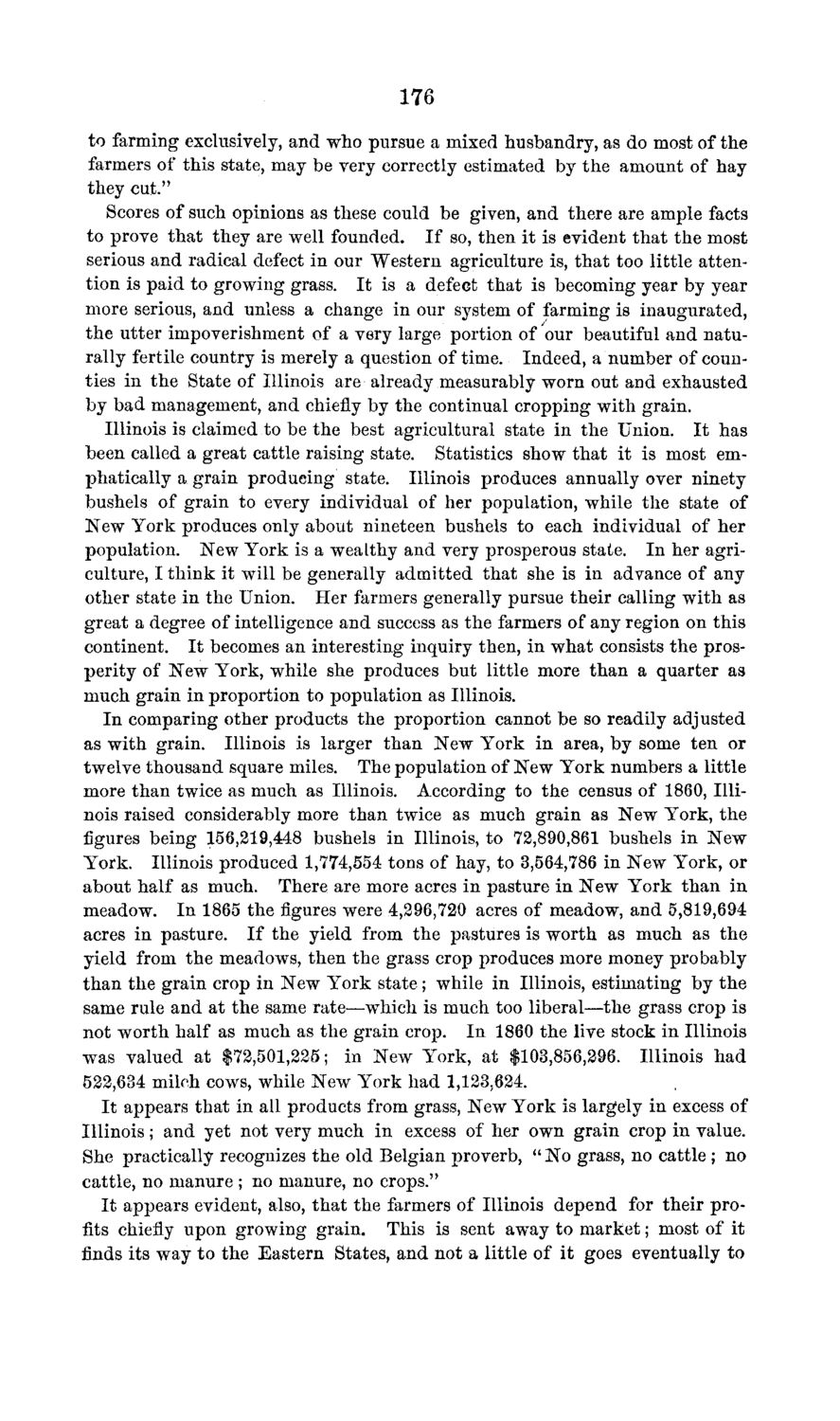| |
| |
Caption: Board of Trustees Minutes - 1869
This is a reduced-resolution page image for fast online browsing.

EXTRACTED TEXT FROM PAGE:
176 to farming exclusively, and who pursue a mixed husbandry, as do most of the farmers of this state, may be very correctly estimated by the amount of hay they cut." Scores of such opinions as these could be given, and there are ample facts to prove that they are well founded. If so, then it is evident that the most serious and radical defect in our Western agriculture is, that too little attention is paid to growing grass. It is a defect that is becoming year by year more serious, and unless a change in our system of farming is inaugurated, the utter impoverishment of a very large portion of our beautiful and naturally fertile country is merely a question of time. Indeed, a number of counties in the State of Illinois are already measurably worn out and exhausted by bad management, and chiefly by the continual cropping with grain. Illinois is claimed to be the best agricultural state in the Union. It has been called a great cattle raising state. Statistics show that it is most emphatically a grain producing state. Illinois produces annually over ninety bushels of grain to every individual of her population, while the state of New York produces only about nineteen bushels to each individual of her population. New York is a wealthy and very prosperous state. In her agriculture, I think it will be generally admitted that she is in advance of any other state in the Union. Her farmers generally pursue their calling with as great a degree of intelligence and success as the farmers of any region on this continent. It becomes an interesting inquiry then, in what consists the prosperity of New York, while she produces but little more than a quarter as much grain in proportion to population as Illinois. In comparing other products the proportion cannot be so readily adjusted as with grain. Illinois is larger than New York in area, by some ten or twelve thousand square miles. The population of New York numbers a little more than twice as much as Illinois. According to the census of 1860, Illinois raised considerably more than twice as much grain as New York, the figures being 156,219,448 bushels in Illinois, to 72,890,861 bushels in New York. Illinois produced 1,774,554 tons of hay, to 3,564,786 in New York, or about half as much. There are more acres in pasture in New York than in meadow. In 1865 the figures were 4,296,720 acres of meadow, and 5,819,694 acres in pasture. If the yield from the pastures is worth as much as the yield from the meadows, then the grass crop produces more money probably than the grain crop in New York state; while in Illinois, estimating by the same rule and at the same rate—which is much too liberal—the grass crop is not worth half as much as the grain crop. In 1860 the live stock in Illinois was valued at $72,501,225; in New York, at $103,856,296. Illinois had 522,634 milch cows, while New York had 1,123,624. It appears that in all products from grass, New York is largely in excess of Illinois; and yet not very much in excess of her own grain crop in value. She practically recognizes the old Belgian proverb, " No grass, no cattle ; no cattle, no manure ; no manure, no crops." It appears evident, also, that the farmers of Illinois depend for their profits chiefly upon growing grain. This is sent away to market; most of it finds its way to the Eastern States, and not a little of it goes eventually to
| |